How to remove a stump - an overview of the best ways to get rid of a stump (80 photo ideas)
The formation of stumps on a land plot can be caused by both the natural withering away of green spaces and the cleaning of the territory for the construction of an object. Existing residues from the tree will not only reduce the aesthetics of the site and make it impossible to erect buildings at a given place, but also make it difficult to move around the courtyard, take up useful space that can be used for planting other crops, give rise to fresh shoots, and become an excellent refuge for summer pests .
Removing stumps on the site can be done both on their own and using special vehicles. We will talk about how to get rid of unnecessary wood foundations with minimal effort, time and money, which method to do this.
Key Approaches
Removing a stump from a sawn or fallen tree can be done in several ways. There are two main approaches to their destruction; there are methods:
- chemical;
- physical.
The first group includes methods involving removal without uprooting. In these cases, a variety of chemical compositions are used. By treating wood residues with a special reagent, they can be destroyed more quickly.
Physical methods are based on the use of standard tools for uprooting. In such cases, getting rid of stumps occurs with the help of a basic set: a shovel, an ax, a crowbar and a saw.
We will try to make out each of the existing methods, and talk about the advantages and disadvantages of this or that method.
Saltpeter burning
A popular way to deal with stumps is to remove them with nitrate. The essence of the method is the impregnation of wood residues with this chemical oxidizing agent and their subsequent burning. Saltpeter will ensure complete combustion of hemp, both its aerial parts and powerful rhizomes.
Preparation for removal by this method will consist of the following steps:
- drill a few thickest and deepest holes in the tree;
- pour saltpeter into the resulting cavities, pour it with water, this will provide a more intensive penetration of the barrel;
Cover the holes with pre-prepared wooden corks of the appropriate size or, even easier, wrap the drilled surface tightly with polyethylene.
In this form, stumps must be left for the whole winter and spring, by the next summer they will be saturated with chemical composition and dry. And then a fire is made around them, it should burn until the stump is completely destroyed. At the end of the process, the place where the woody skeleton was previously located is dug up.
The main advantages of this method are:
- minimal physical activity per person;
- complete disposal of the remnants of the tree;
- ease of implementation;
- guarantee the absence of young shoots from the remaining rhizome in the future.
However, this method has several disadvantages:
- saturation of the soil with nitrate, which is harmful to tuberous and some fruit-bearing crops;
- a large time interval between the beginning and end of work;
- the need to purchase a chemical reagent.
Urea Removal
The preparation of the wood frame using this method will be identical to the previous method. The surface is perforated with large diameter drills, and the resulting cavities are filled with urea - urea. Next, you need to fill the holes with water and cover the barrel with a polymer film.
Such a simple way to remove stumps will allow you to completely get rid of wood substrates in one or two years and get a fertile soil layer in their place.
The main advantages of this method are as follows:
- minimal physical work of a person;
- substance safety, the soil is not clogged with nitrates;
- absolute removal of the remains of a tree.
The disadvantages of this method can be considered:
- a large time interval for which destruction will occur;
- additional costs associated with the purchase of chemical material;
- high reagent consumption.
Chemical Safety
Having decided to deal with unnecessary wood residues by chemical methods, do not forget about the basic rules, observe all safety precautions.
- First, be sure to use personal protective equipment when working. Choose clothing that covers all areas of the body, wear gloves.
- Secondly, in the cultivated area and around it, do not grow berries, plants, fruits or vegetables that will be eaten.
- Thirdly, remember that when burning hemp with nitrate, plants planted within a meter radius of the treated place may also die. Therefore, it is better to transplant the crops that need to be preserved in advance.
Root stump
You can remove stumps on the site by making it uproot. To do this quickly and with the least effort, specially rented equipment will help: a tractor, an excavator, however, such measures will be quite costly if only a couple of unnecessary stumps are located on the site.
To uproot the woody skeletons is quite realistic on their own, the main thing is to adhere to the basic simple rules.
To get started, carefully prepare for the procedure, clean the stump from the soil surrounding it, this can be done in two ways:
Using a bayonet shovel, dig a space of 0.5 meter radius around the former tree.
Also, using a shovel, dig a hole located one and a half meters from the skeleton, about a meter in diameter, about 50 cm deep, and make a groove for it from the removed wood base. Then, by sending a powerful stream of water to the stump, the soil will begin to wash out, opening the approach to the root system.
Having the ability to use a winch, it is possible to make uprooting with its help. To do this, the stump along the trunk and rhizome is wrapped with a strong metal cable, which is stretched through the winch.
The cable going to the winch from the sawn surface will be a kind of lever, which will serve to quickly remove the skeleton from the ground. The winch is mounted on a pole or other tree.
Without a winch at your disposal, you can perform the usual mechanical removal, which is carried out by sawing or chopping off the roots of the wood frame.
After trimming the lateral root system, the central pillar remains, it’s quite difficult to approach it with the tool, so it must be “loosened” by applying physical force. With the help of active movements, tilts in different directions, turns of the stump around the axis, you can make its final separation with the rhizome.
Speaking about the advantages of this method, the following advantages can be distinguished:
- minimal financial losses;
- high speed of work, this method does not stretch for several months.
However, this method has significant disadvantages:
- the process of uprooting is very laborious;
- incomplete removal of wood residues, the root system remains in the ground, which may interfere with the construction at this place;
- the need for assistants to cope alone with a thick, massive trunk alone is quite difficult.
By cleaning the land from interfering wood residues, you can increase the efficiency of its use. In addition to additional functionality, the ennobled territory will become more well-groomed and aesthetic. Therefore, do not leave the wood "garbage" in the garden, be sure to clean the area.
Choose a method for removing stumps that is more convenient for your case, carefully study the detailed photo instructions for the selected method and get down to business.
Photo tips for removing stump
DIY brazier: drawings, instructions, recommendations + photos of ready-made ideas
Perennial flower beds - 85 photos of planting patterns and features of continuous flowering
Home interior design 2019 - 100 photos of the best interiors
Join the discussion:

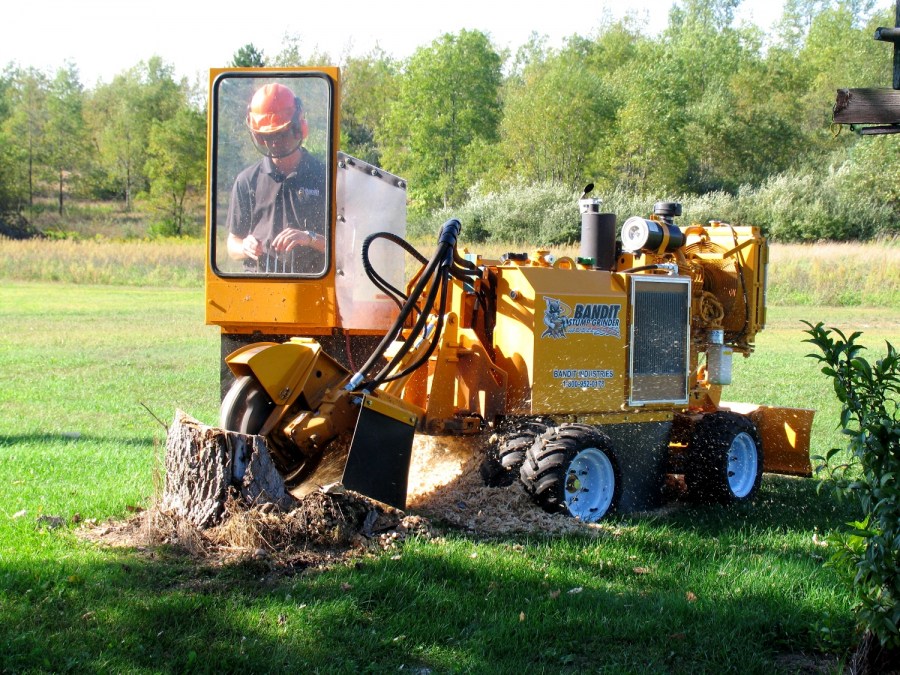


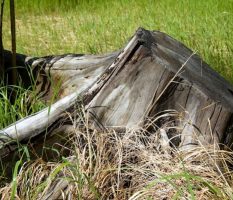
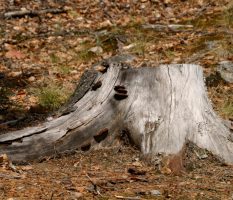
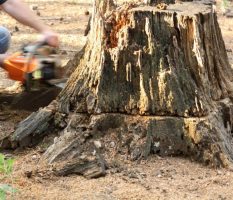
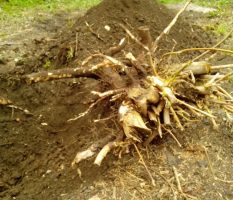
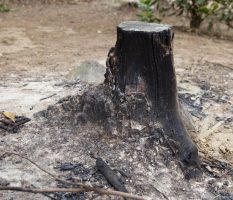
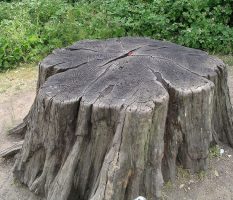
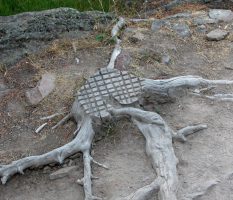

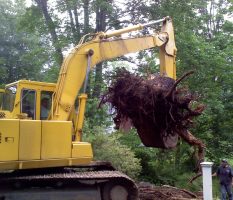
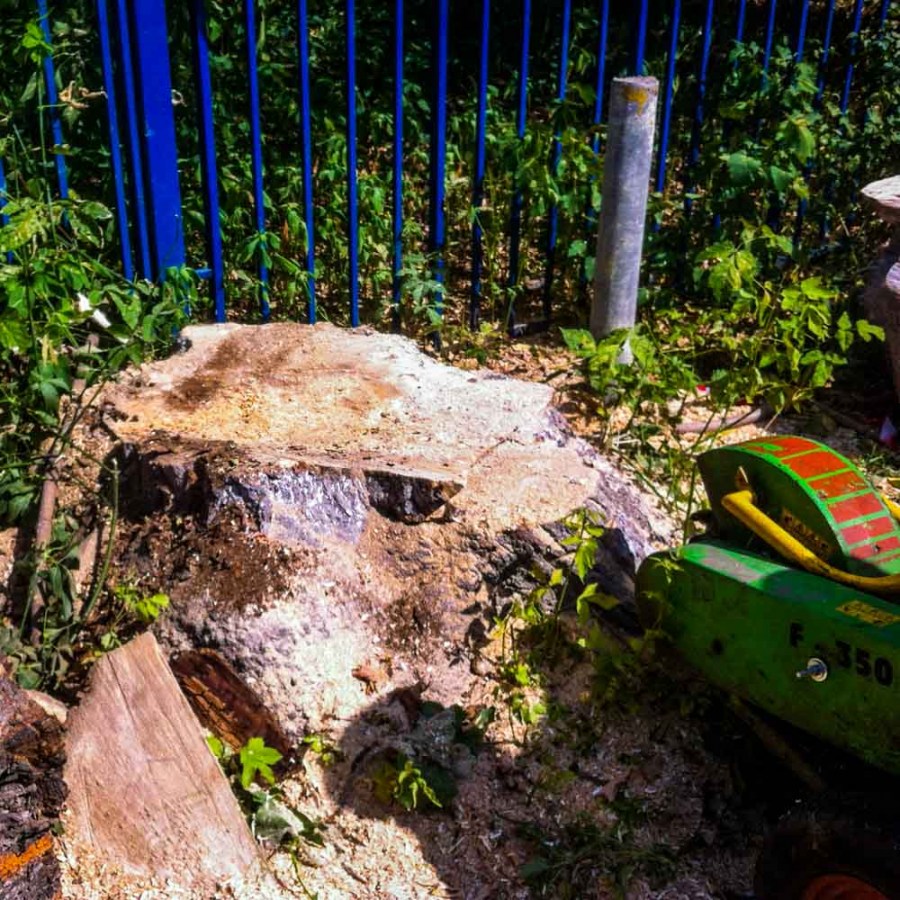
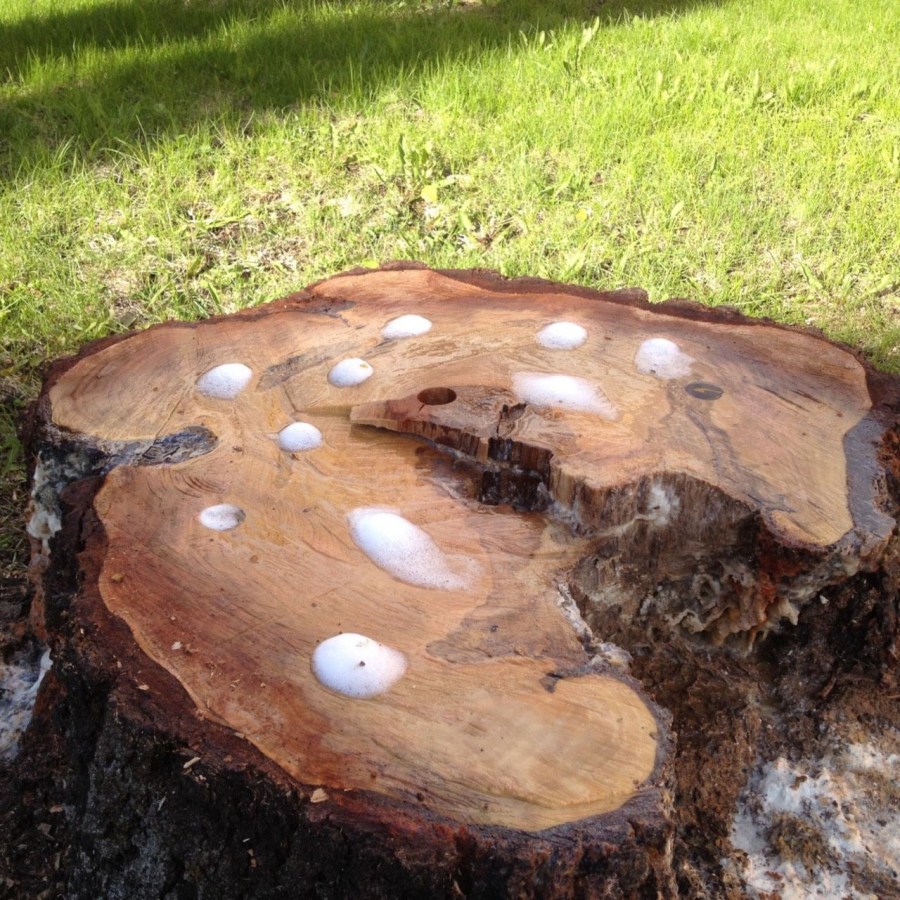
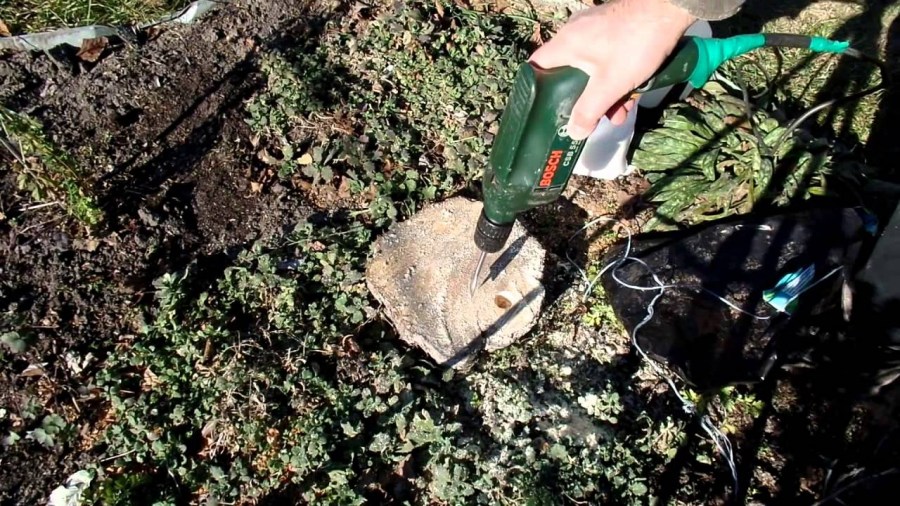


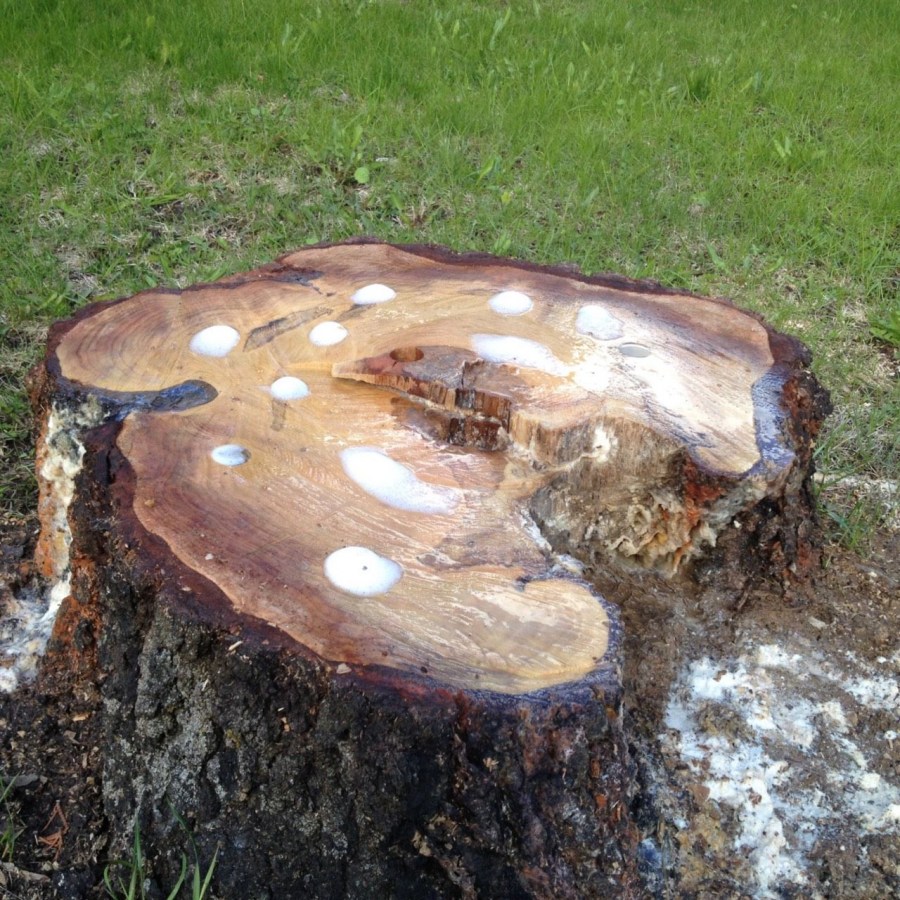
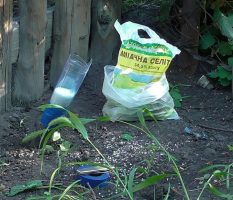
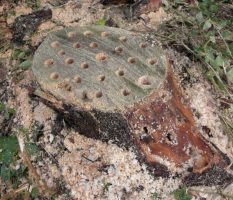

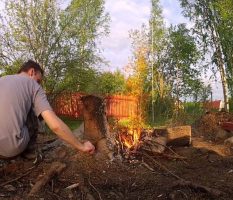
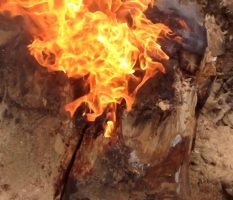
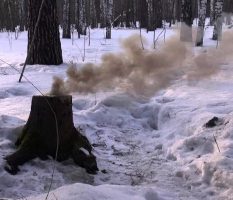
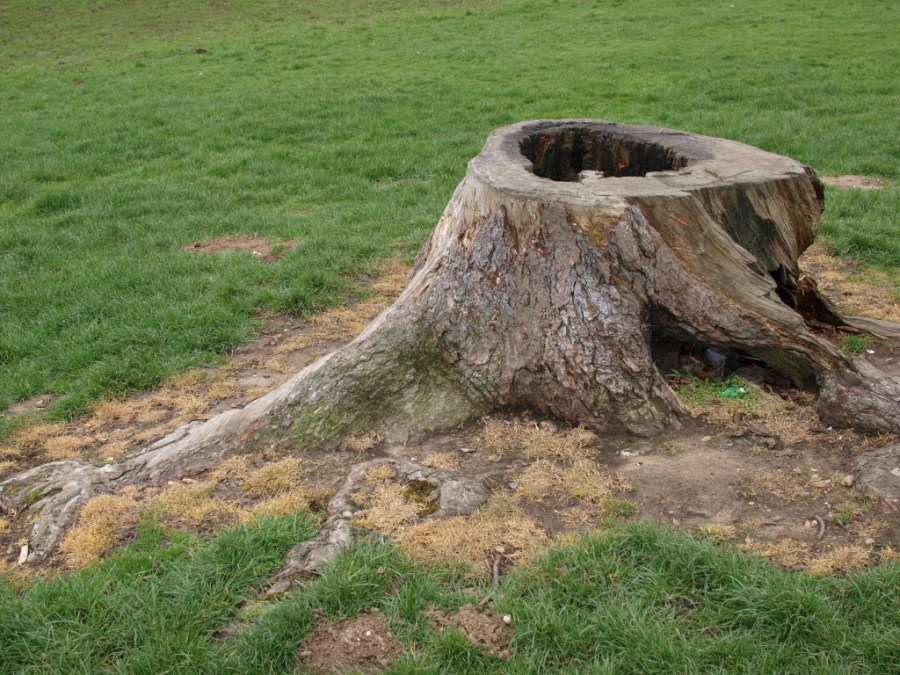

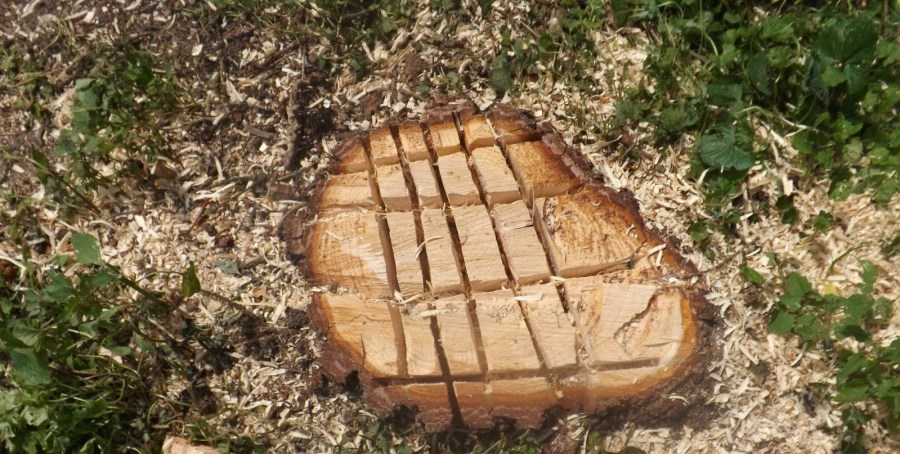
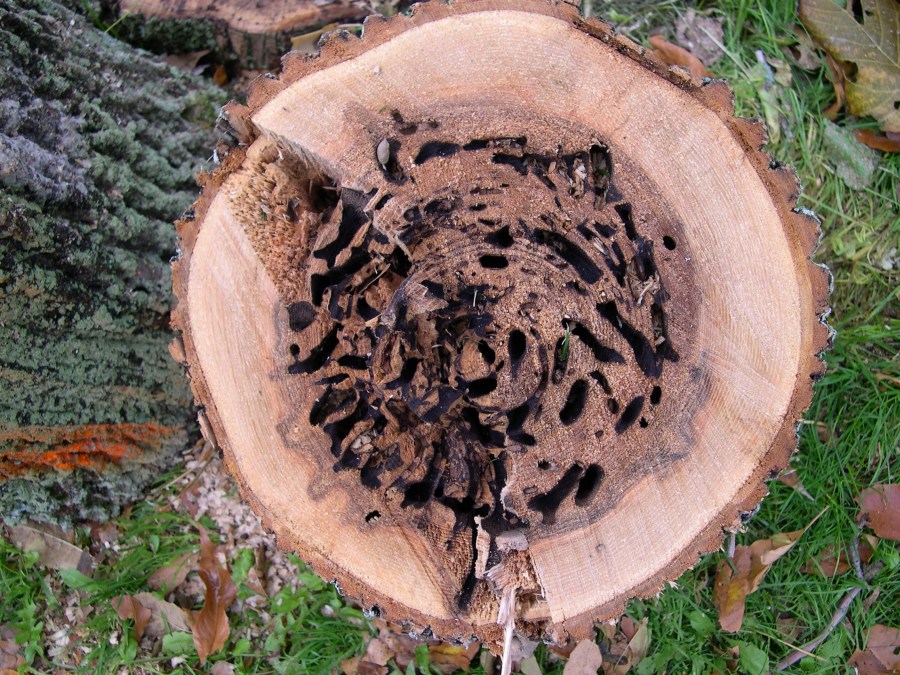
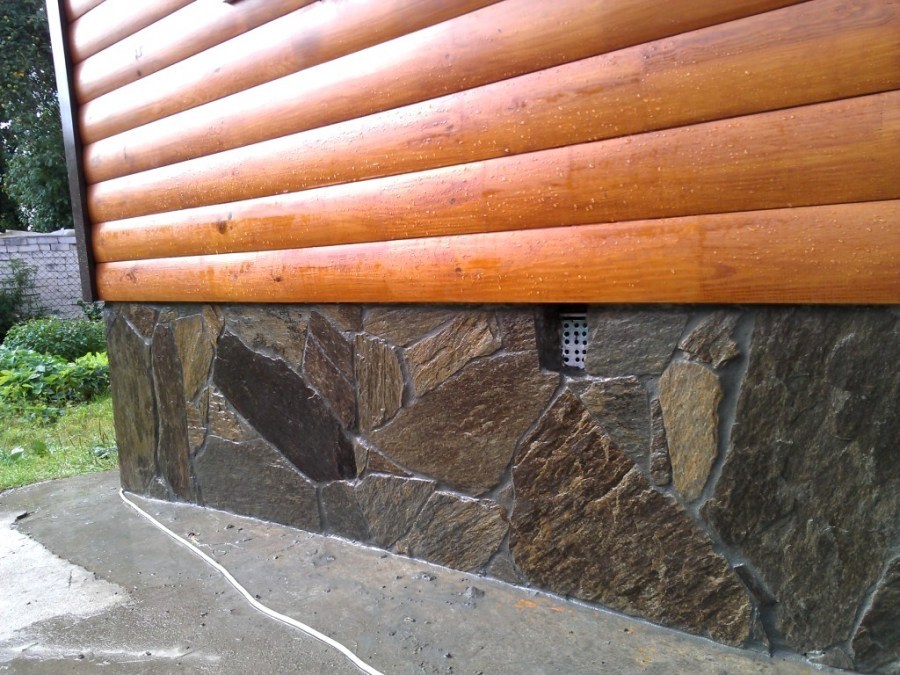



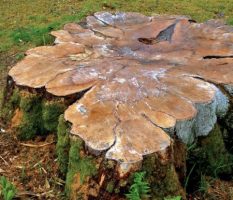
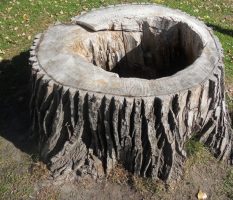
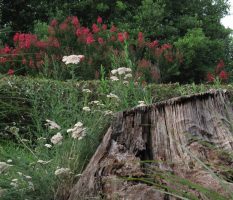
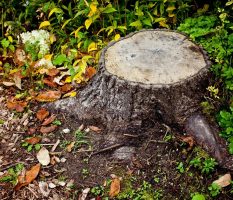
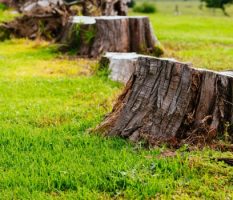
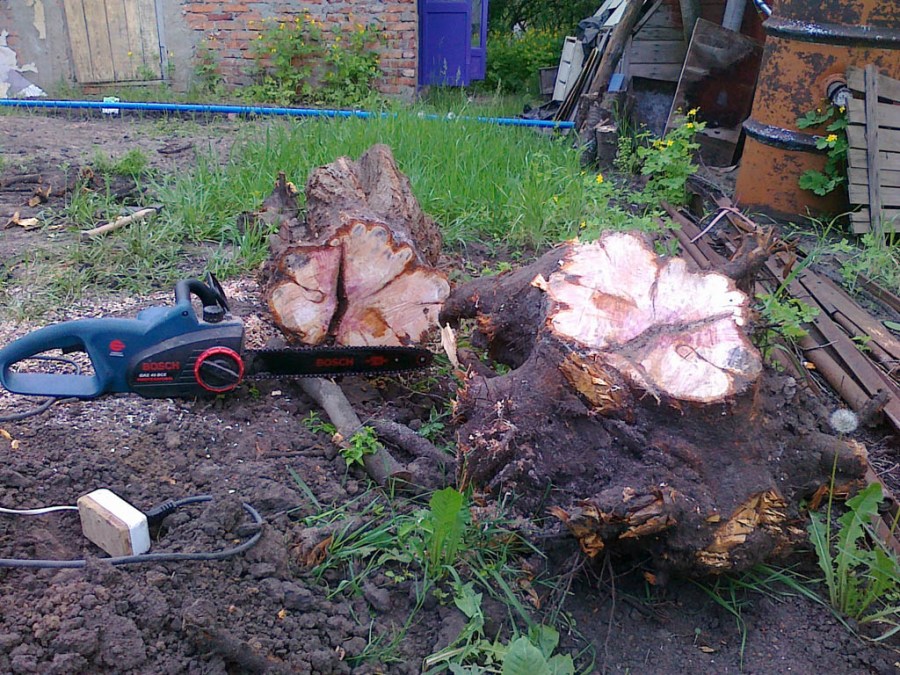
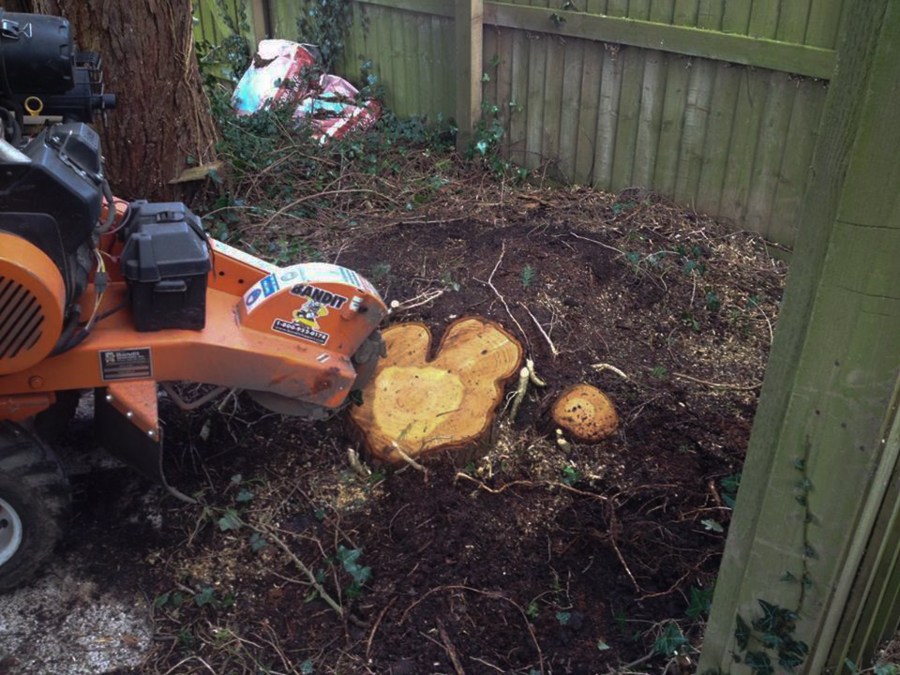
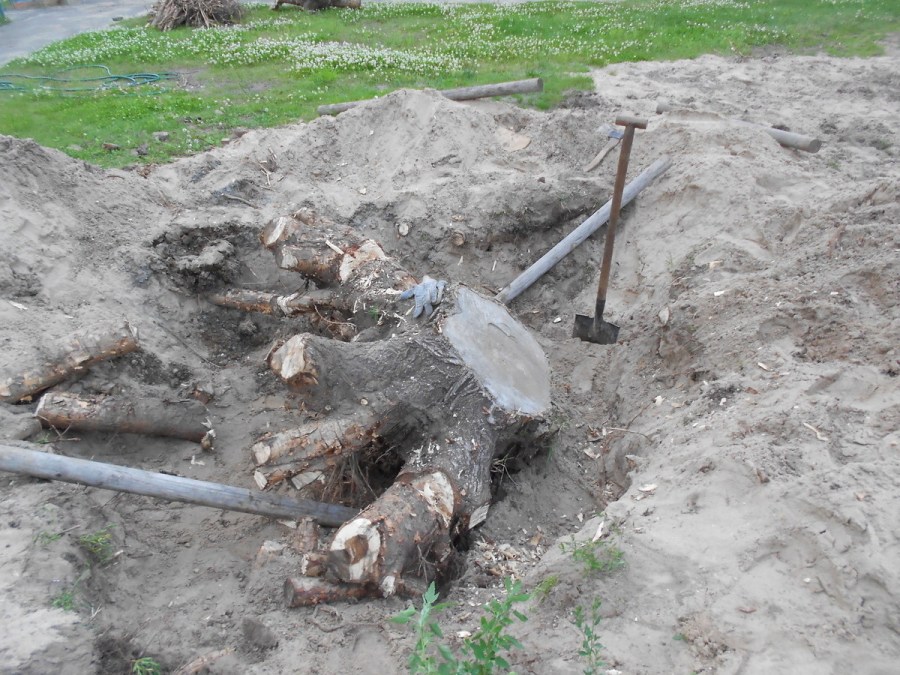
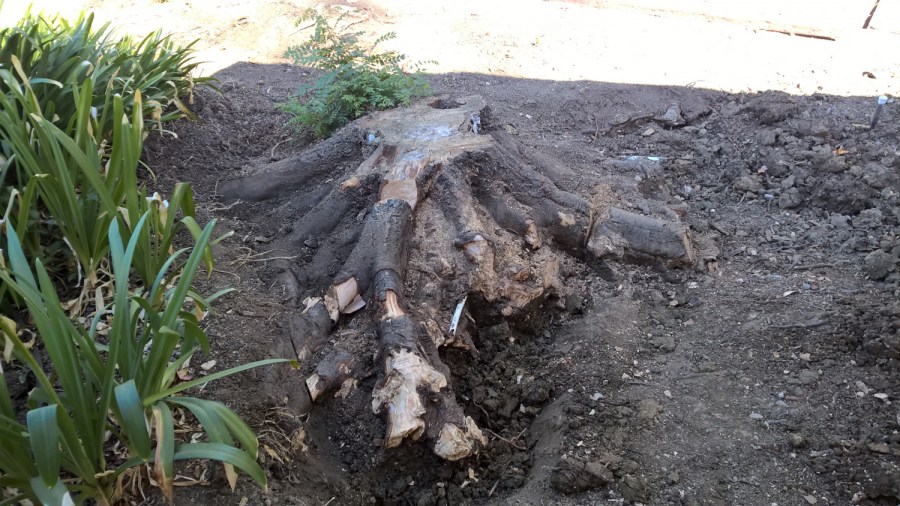
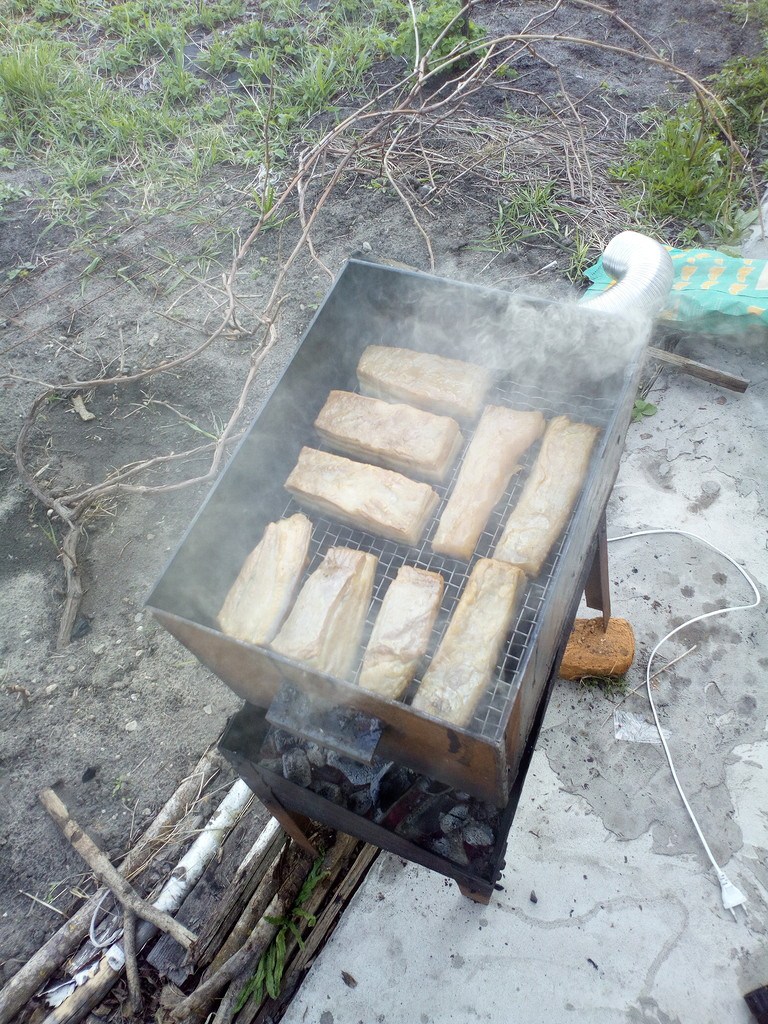
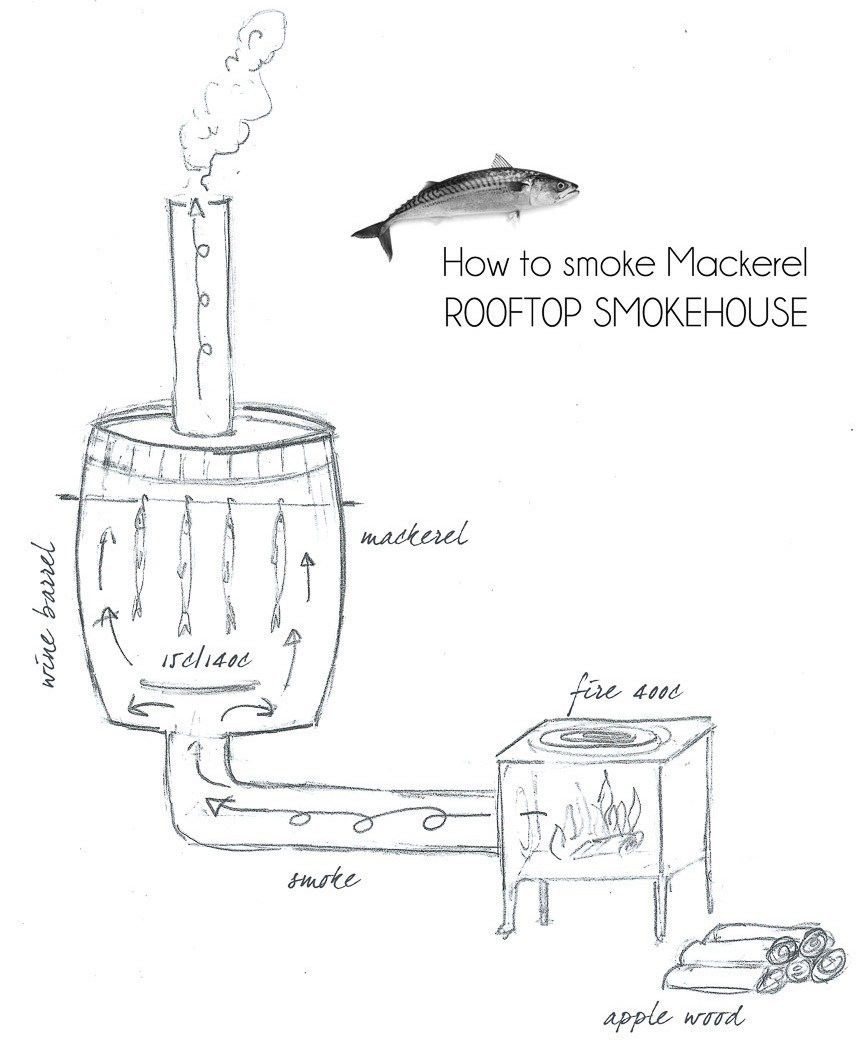




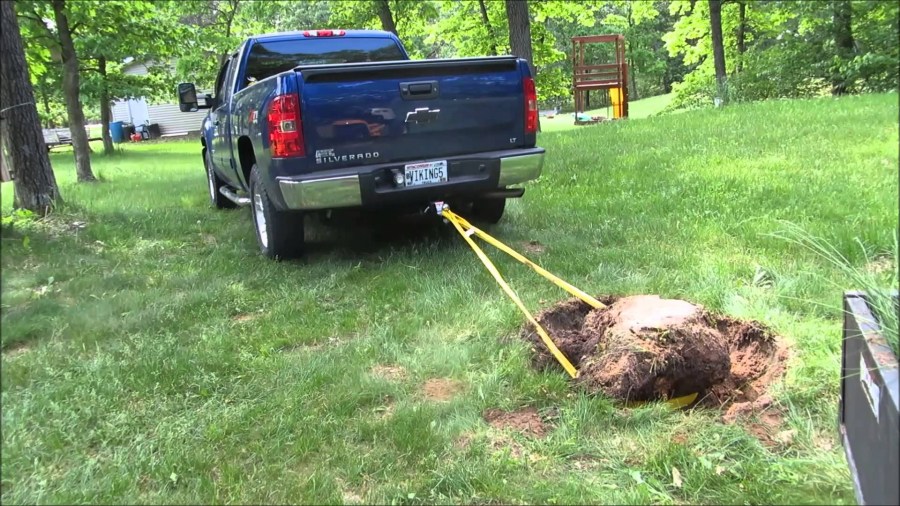
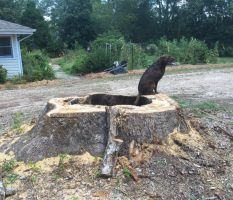
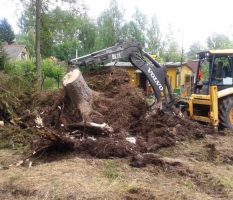

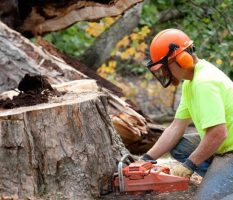
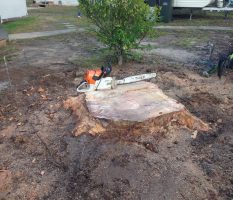
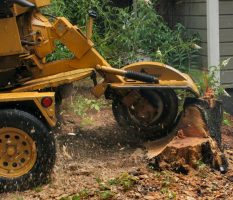

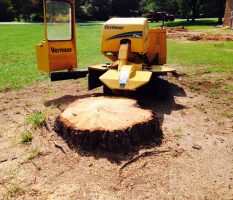
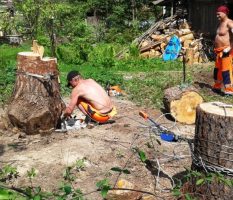
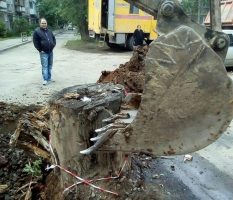
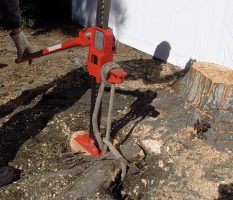
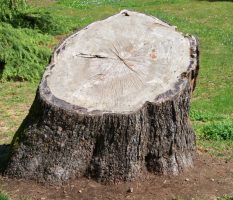
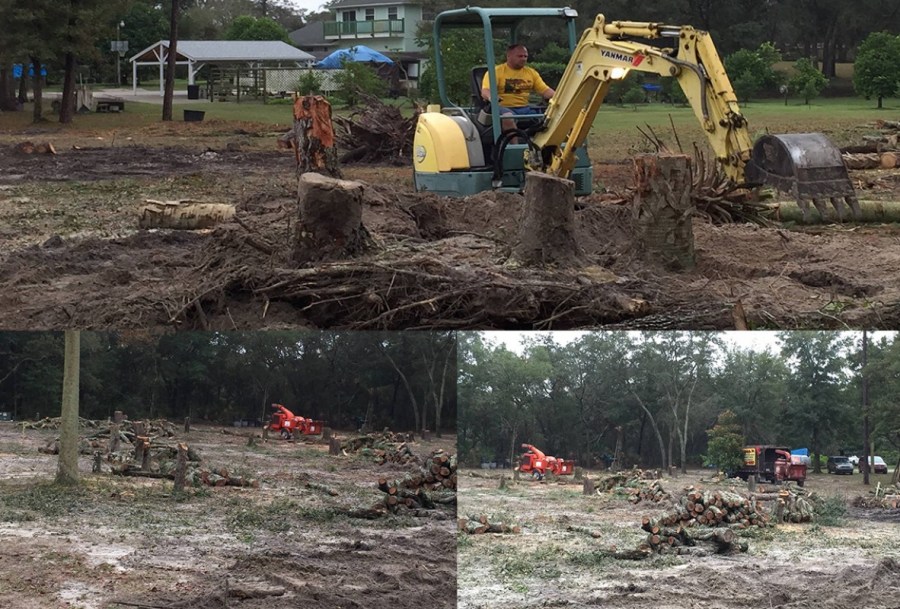


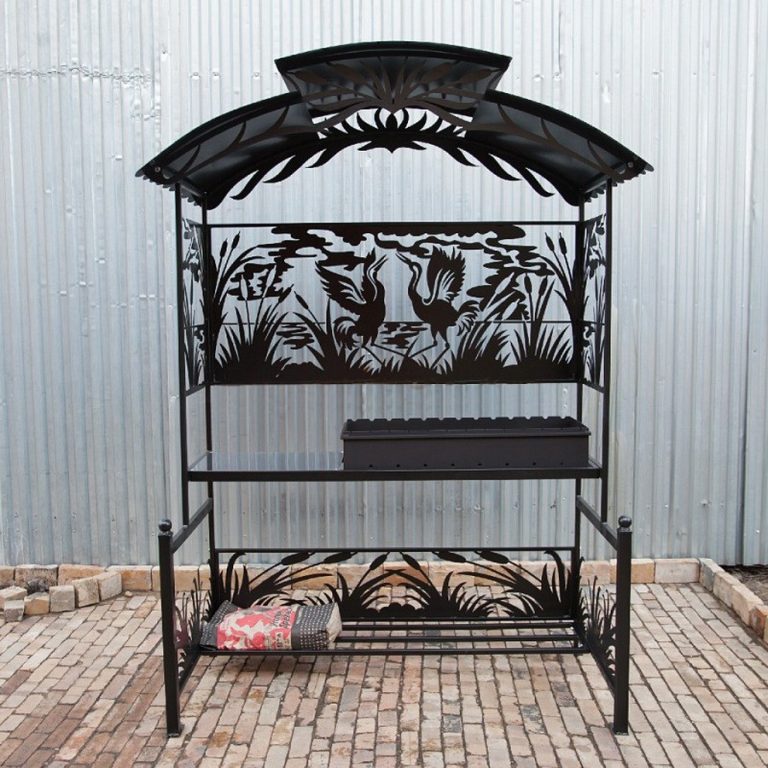

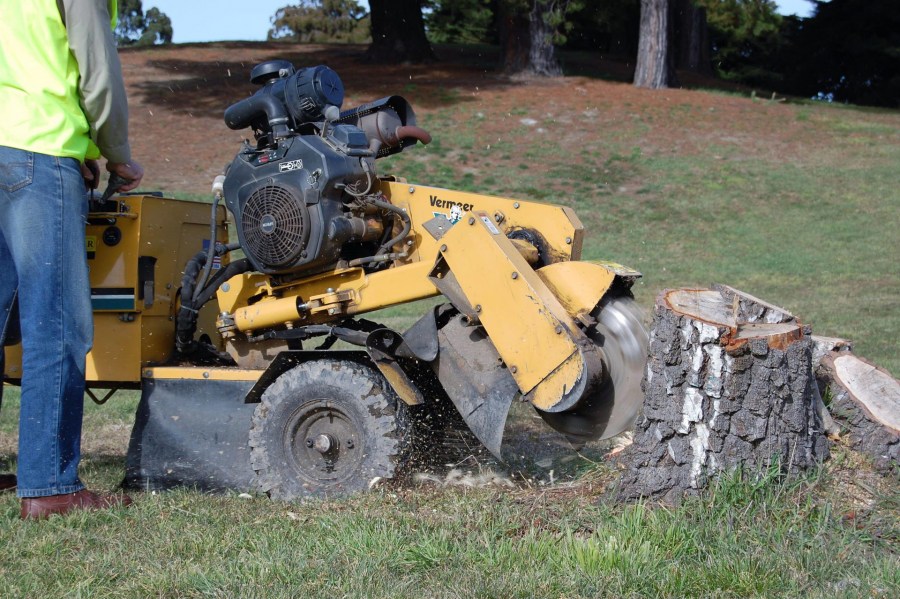

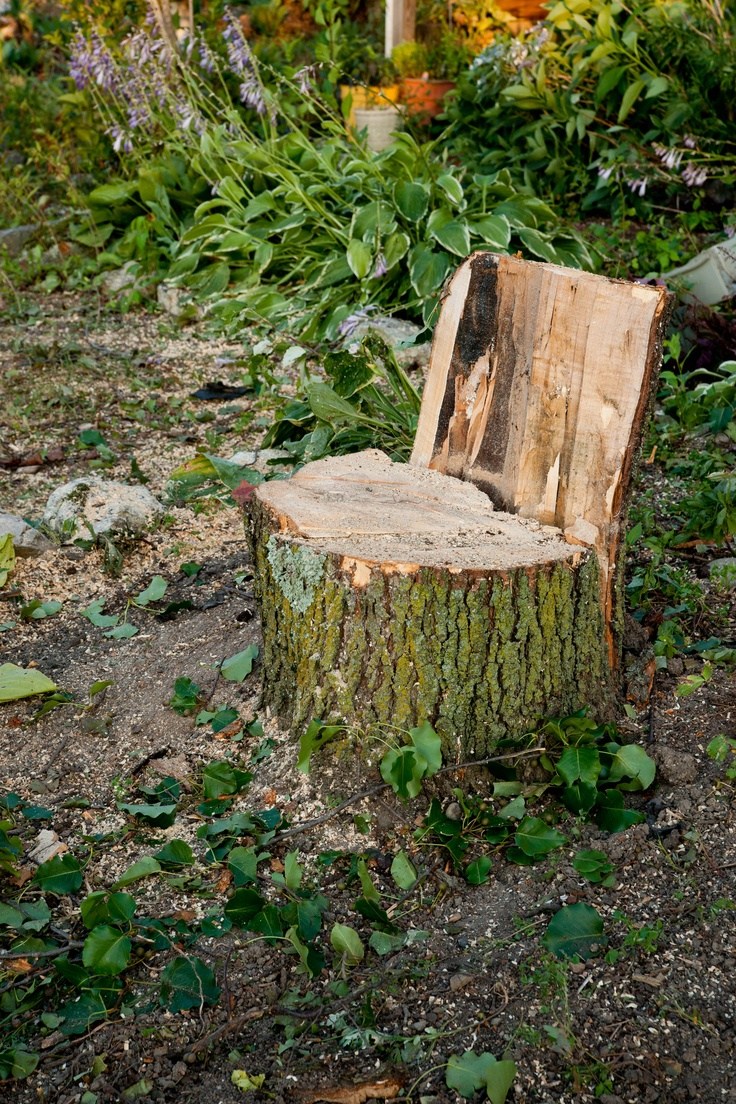
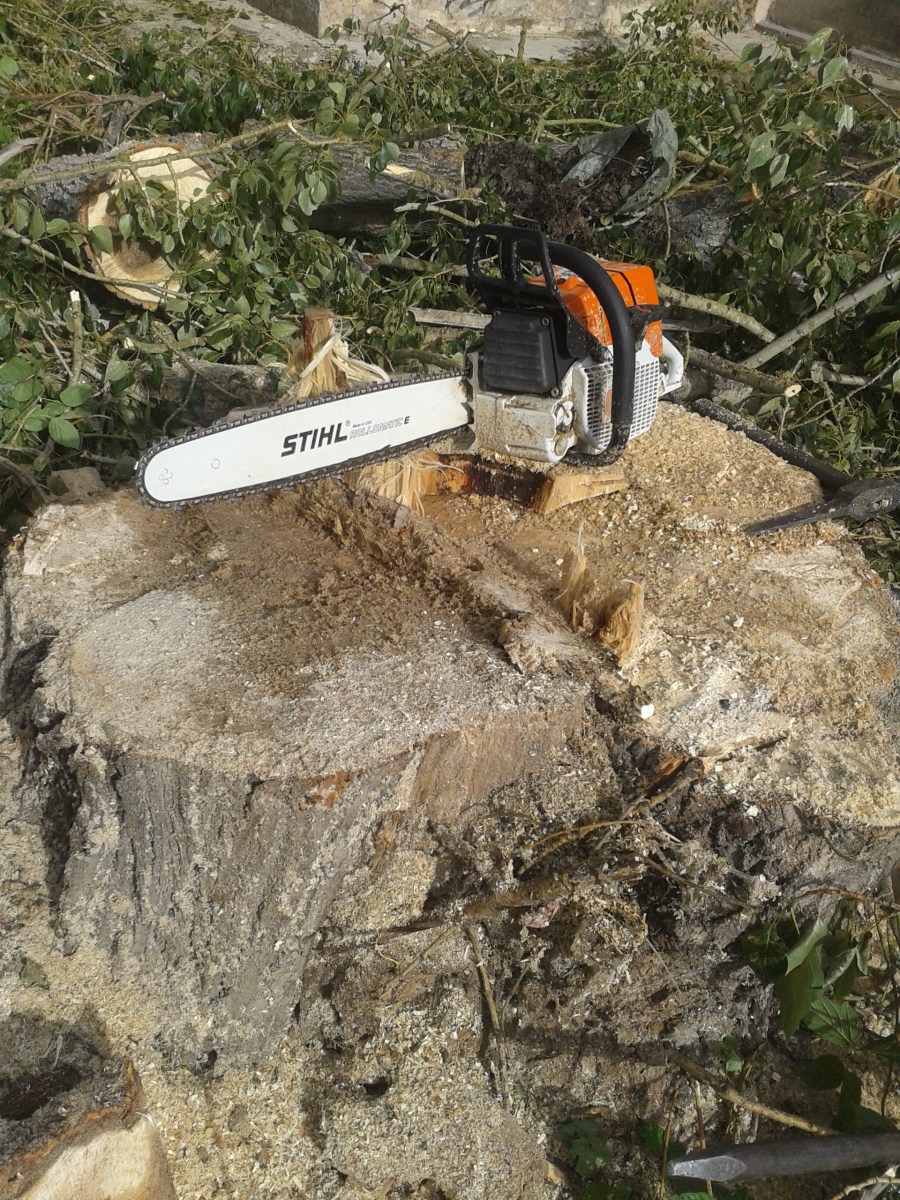
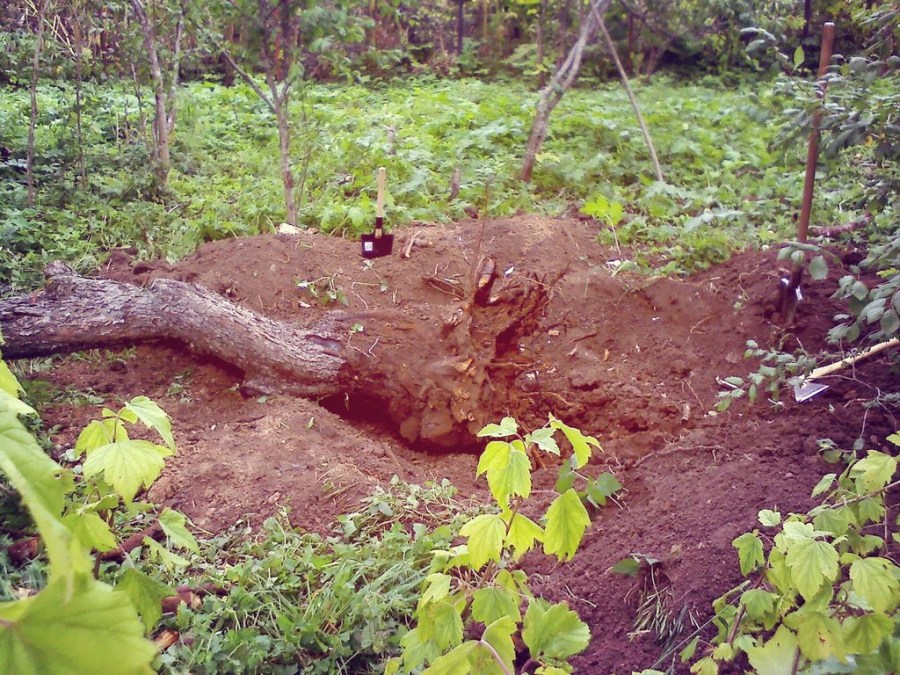

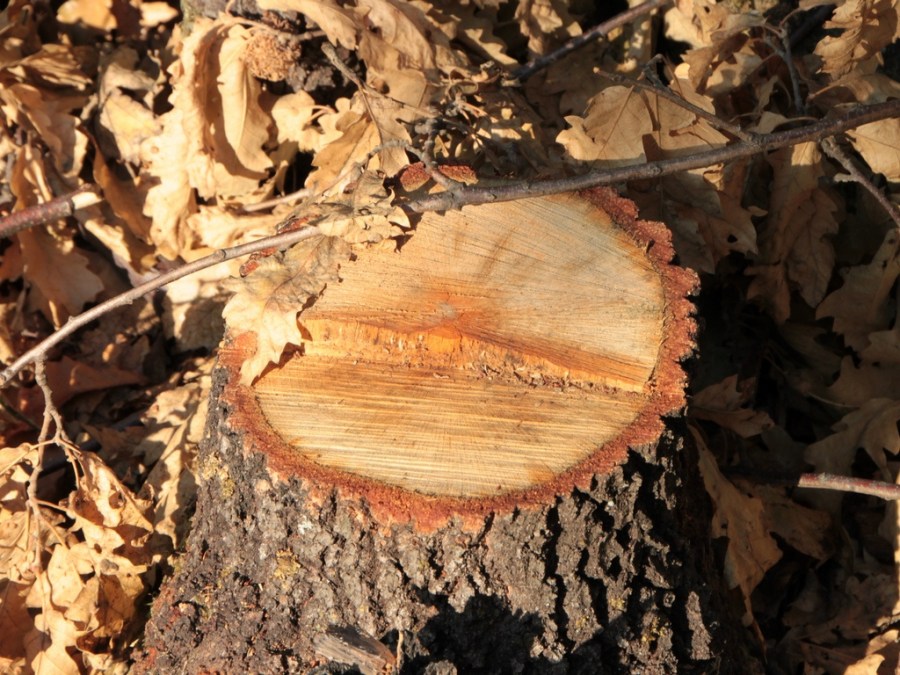


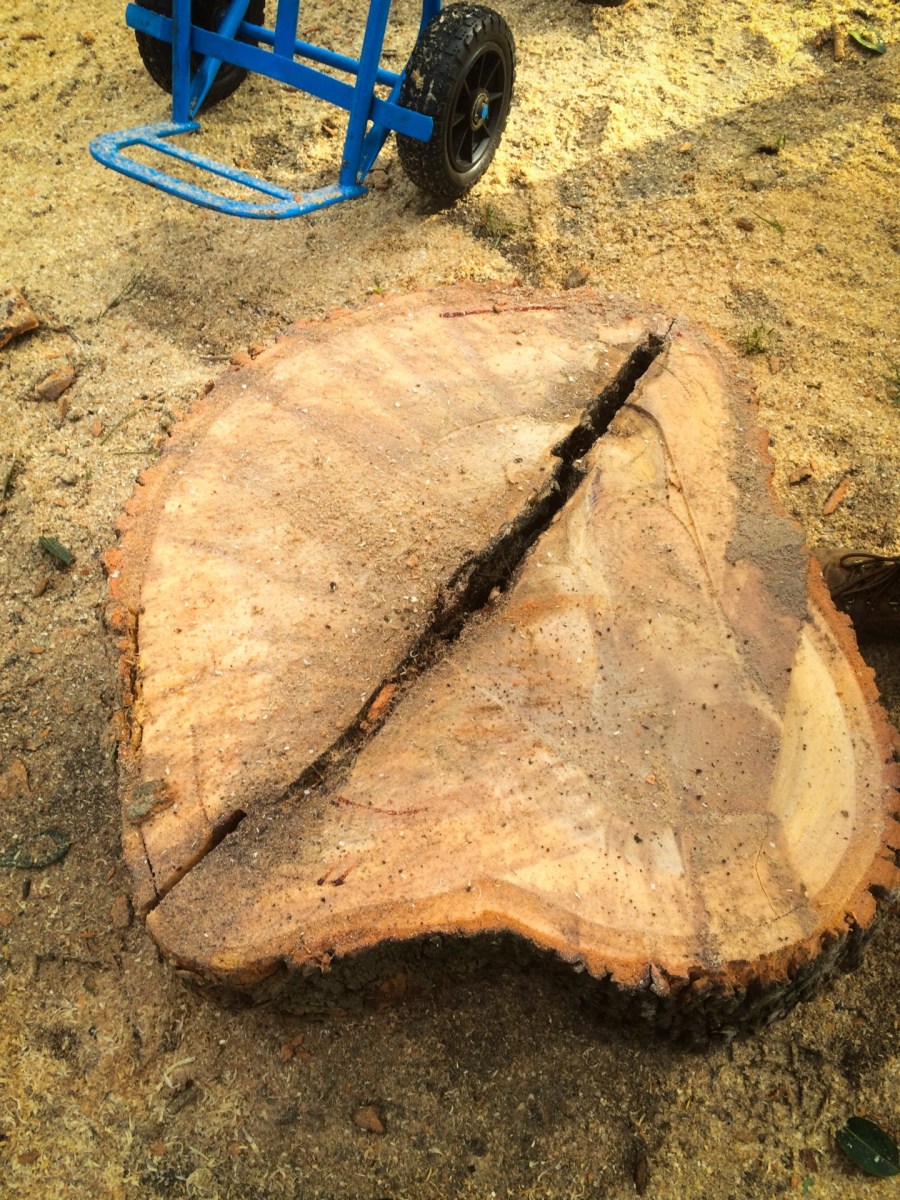
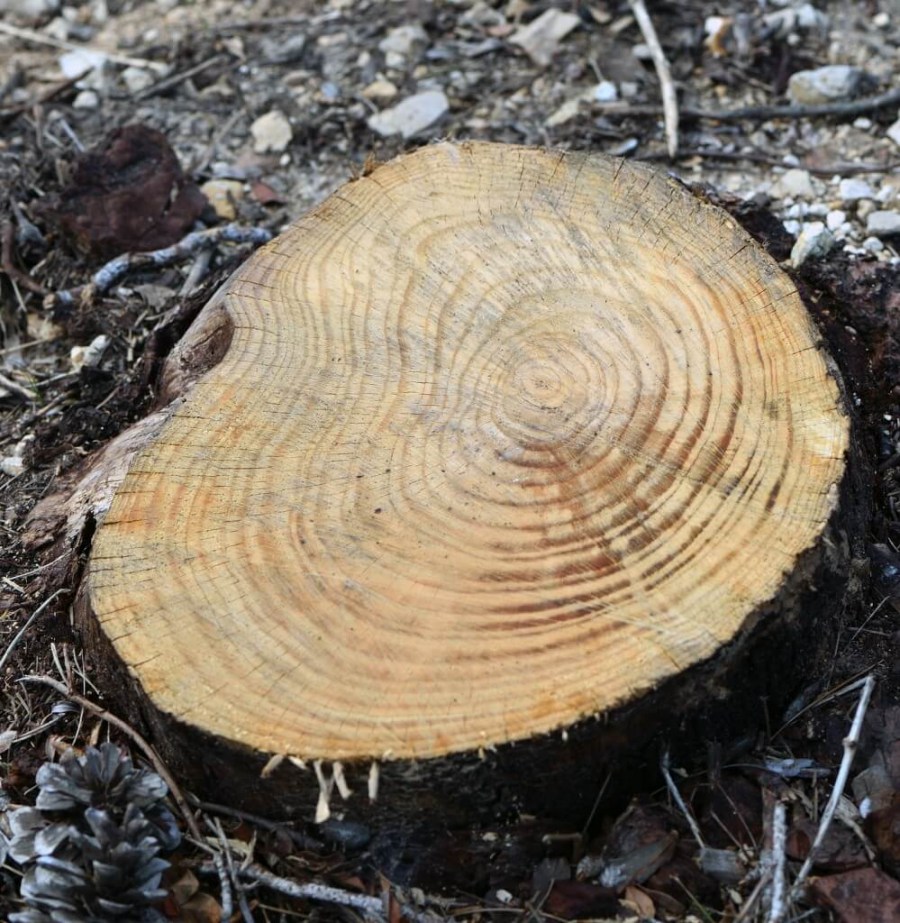
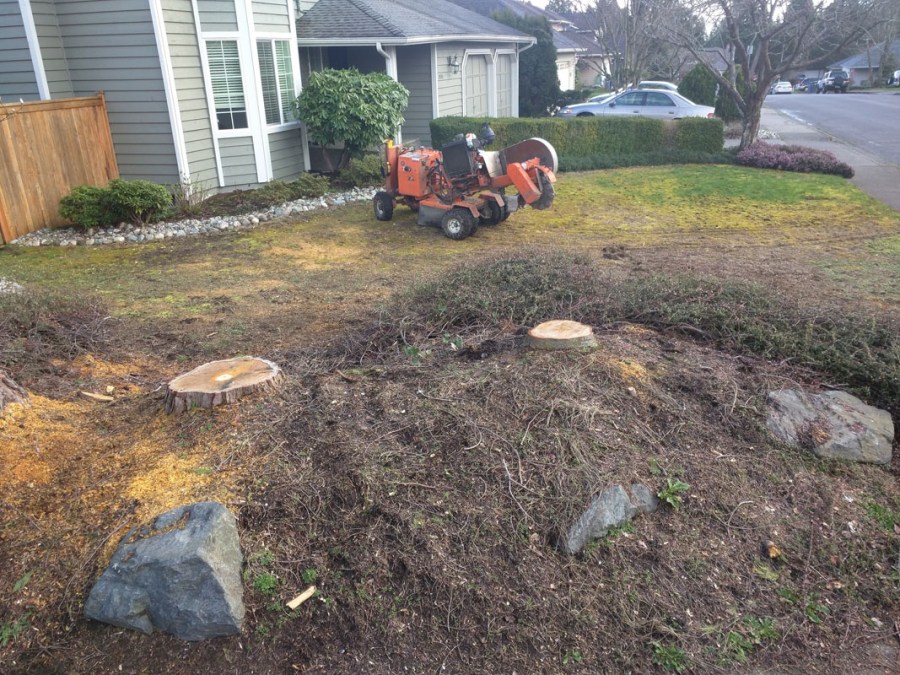

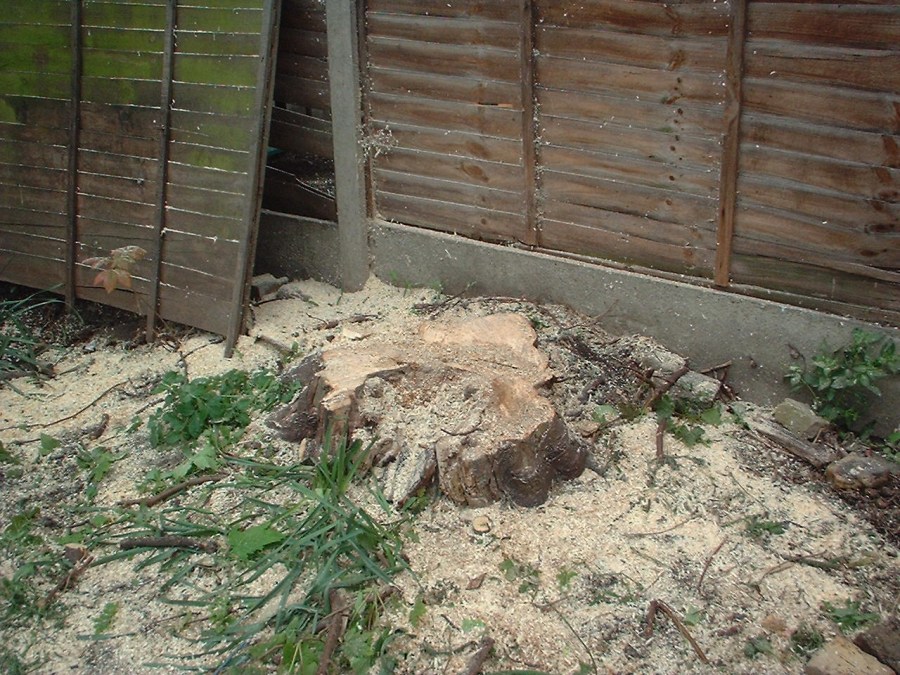
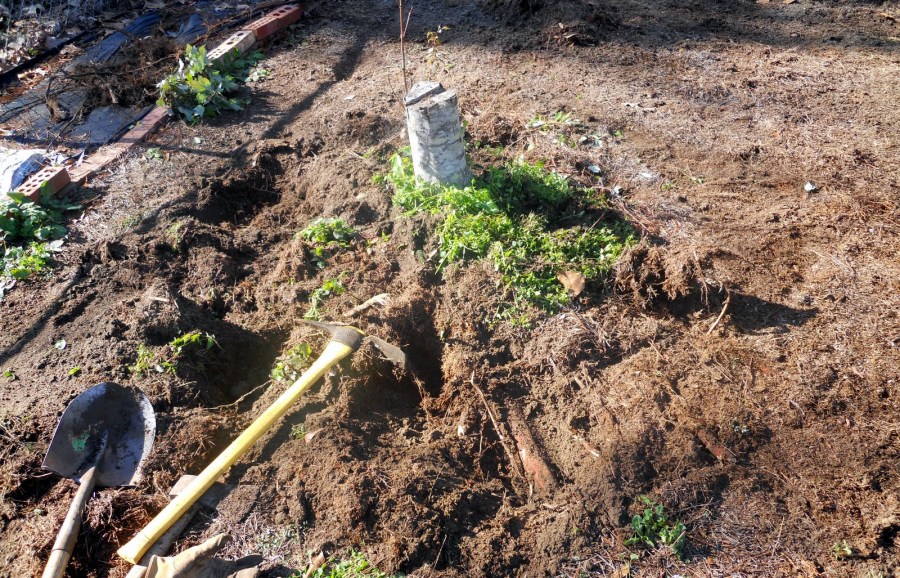


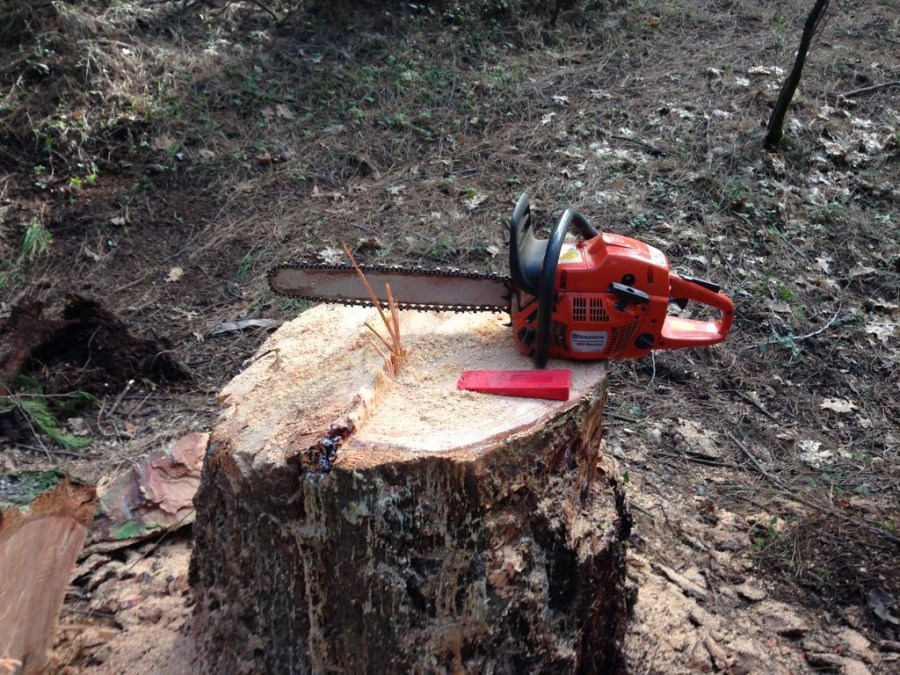
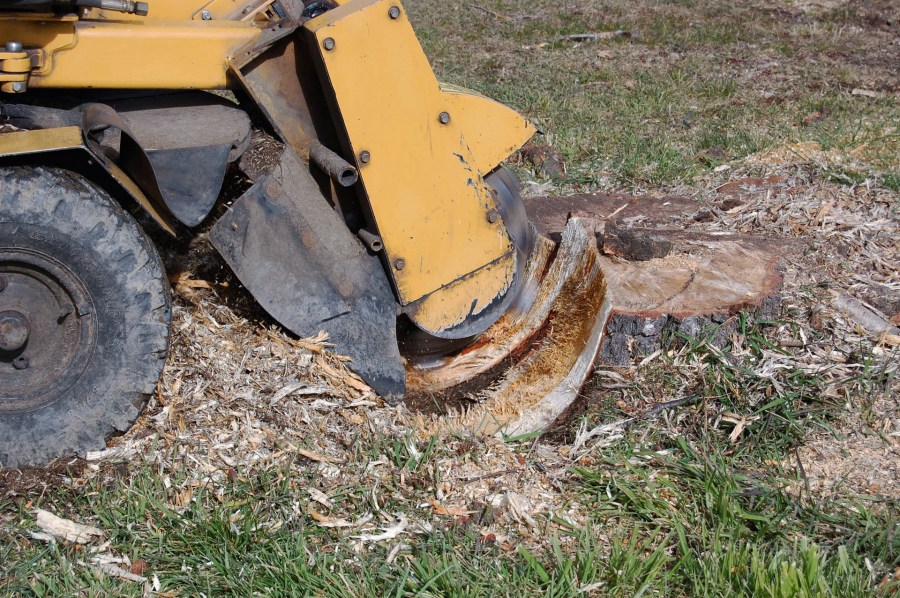
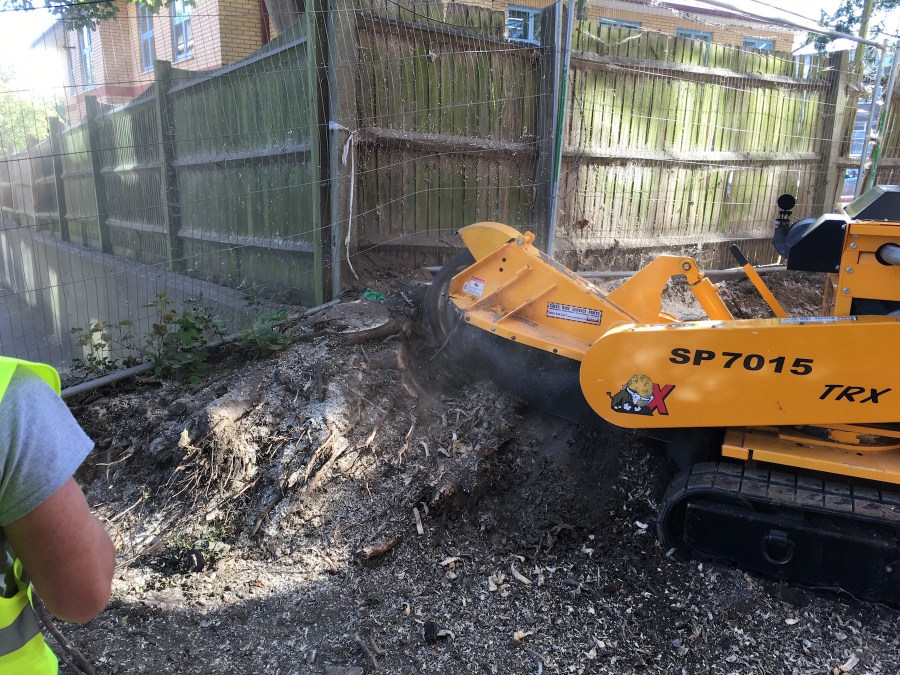
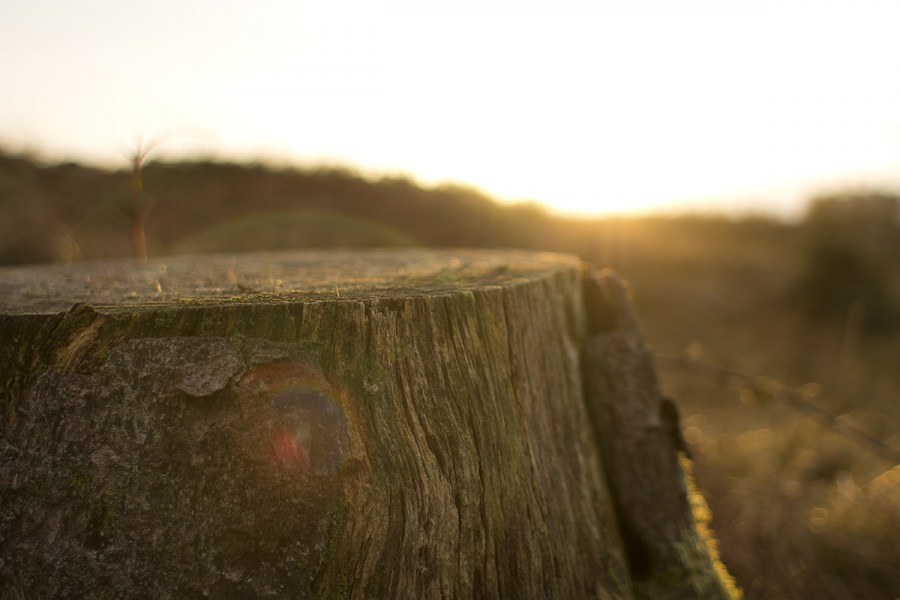
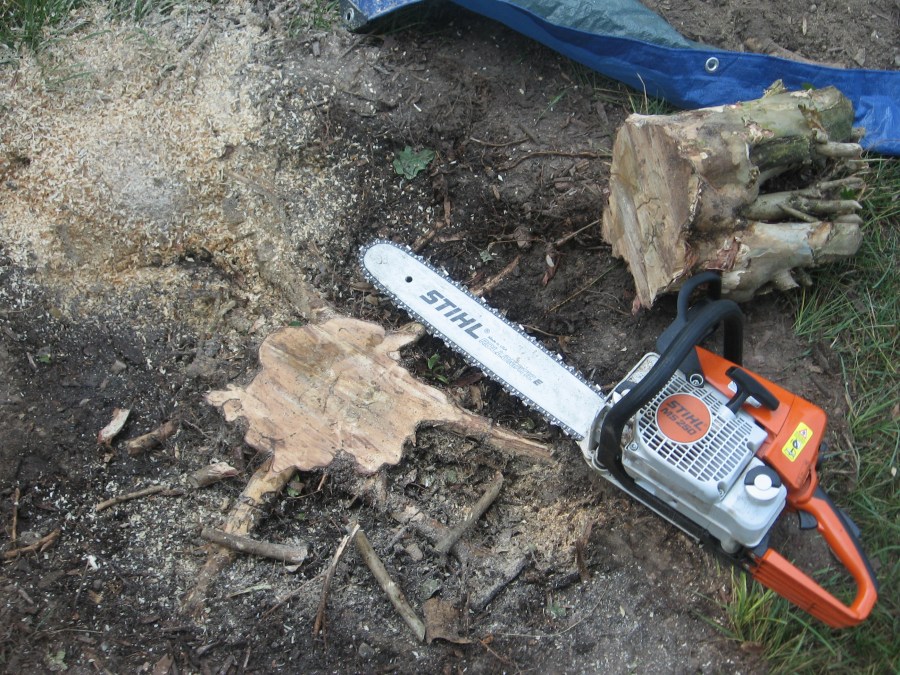






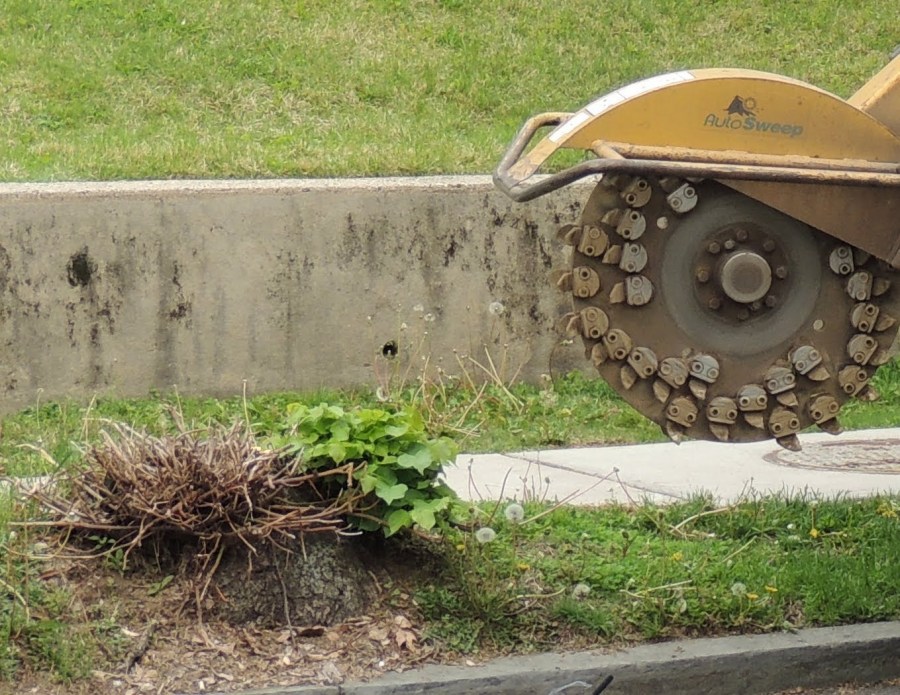
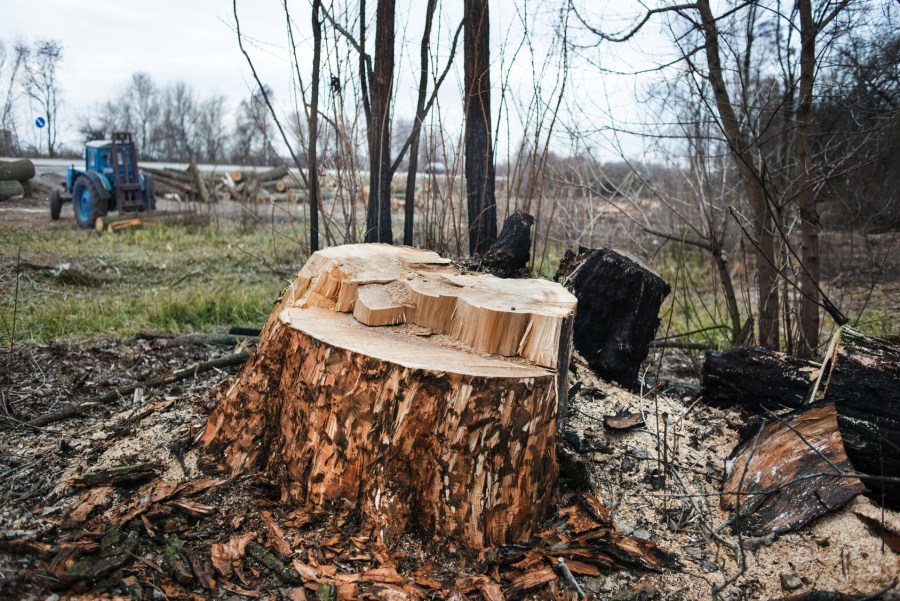
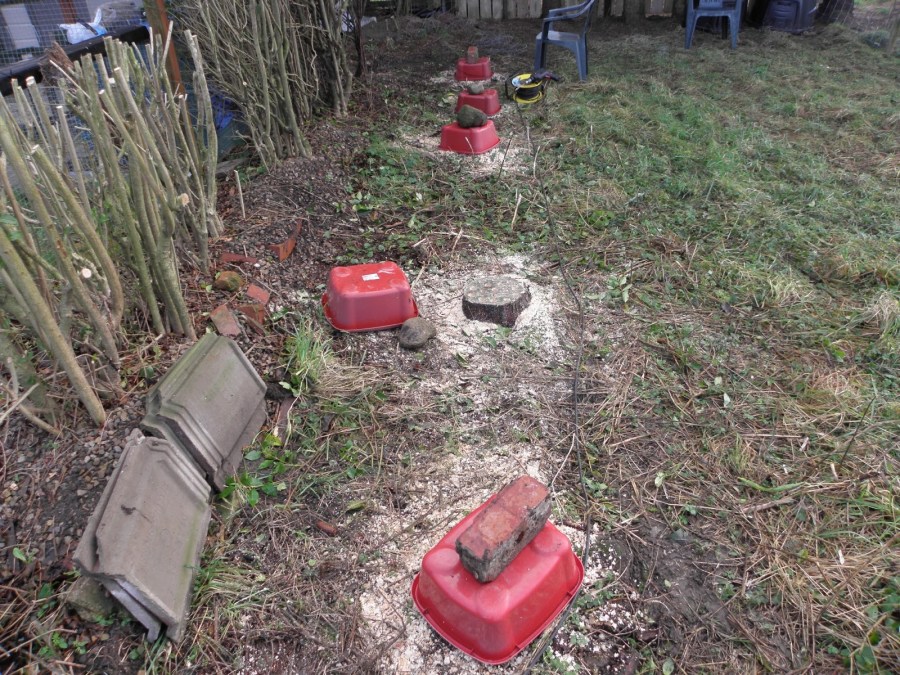


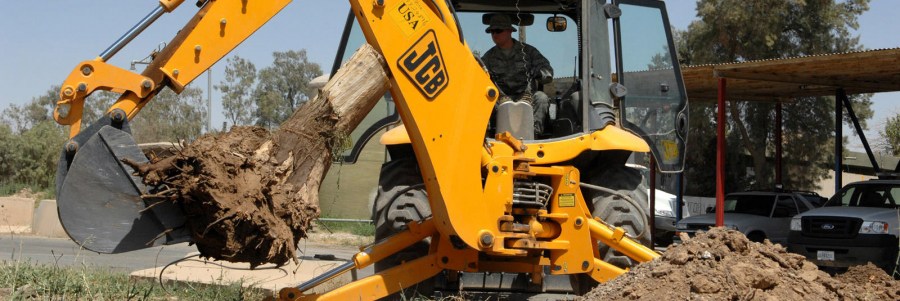
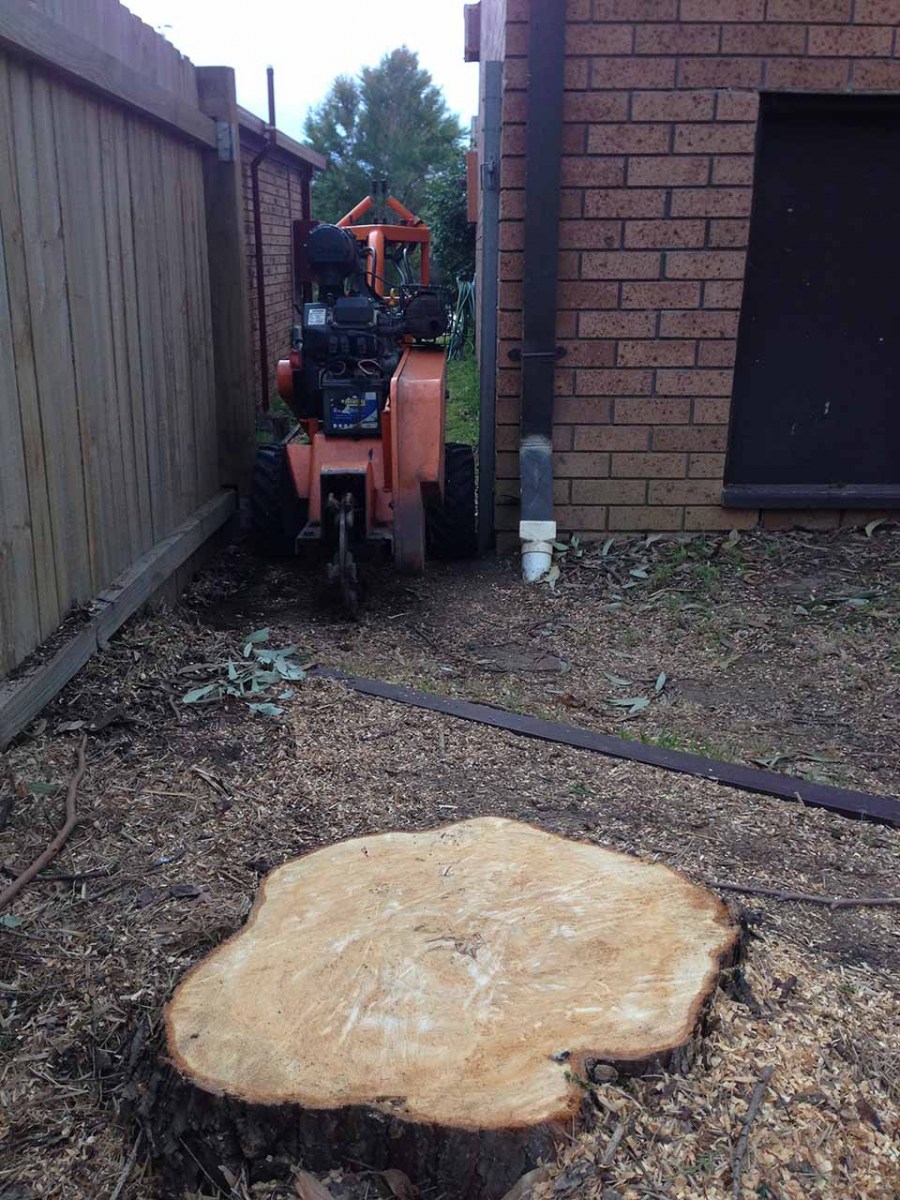
Stumps in a summer cottage are a real "headache". They must be uprooted, as they will not only spoil the landscape design, but can also become a hotbed of infection on the site.
Interesting ideas with burning stumps. I will share my experience of uprooting trees. This summer I had to dig an old apple tree. I cut it not at the root, but left two meters high. It turned out a kind of "lever", with which it is easier to swing a dug tree
What we just didn’t try .... Up to the end, it didn’t work out. Anyway, this apple tree comes out on the site.